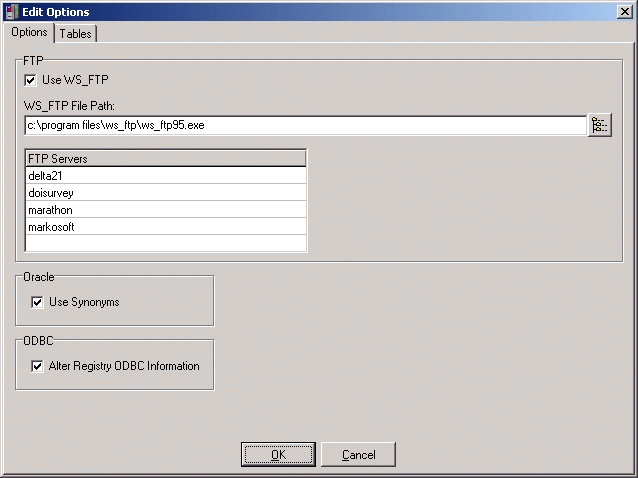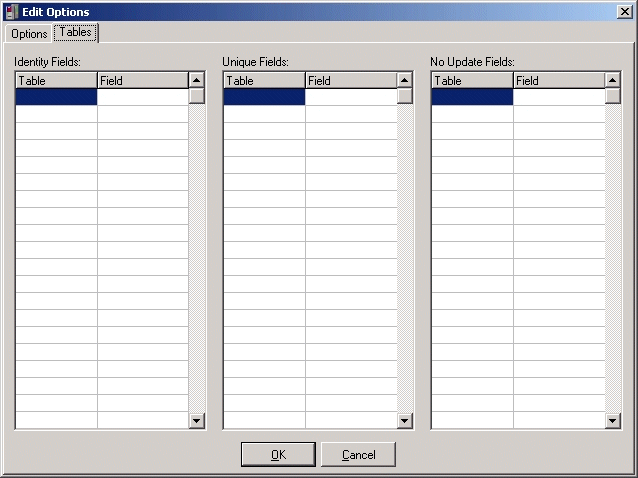

Topics
Altering ODBC Registry Information
Listing Identity Fields
Listing No-Update Fields
Listing Unique Fields
Using Oracle Synonyms
Setting Up FTP
Setup

Setting Up FTP
The WS_FTP application may be called directly from the
Database Assistant. However, the Use WS_FTP
checkbox must be checked, the path to the WS_FTP application must
be complete and at least one FTP server must be listed.
Using Oracle Synonyms
If synonyms are used with an Oracle database, check the use synonyms checkbox so
that the Database Assistant application can correctly identify the tables.
Altering ODBC Registry Information
Typically, the Database Assistant is used to switch database
pointers by switching between different data
sources. However, it is possible to use the same data
source name for different databases. In other words, if you have an
application that is supported on both SQL Server and Oracle and you want to switch
back and forth between the two databases, the Database Assistant can be configured to
alter the ODBC registry information and achieve the desired results.
When the Alter ODBC Registry Information checkbox is checked, the registry is edited
whenever a new database is selected to allow for switching the database pointer
for the same data source name. The Configure Database screen also provides additional
fields that must be completed whenever the Alter ODBC Registry Information checkbox is
checked.
If you are not switching between different databases while using the same data source
name, you should not check the Alter ODBC Registry Information checkbox.

Listing Identity Fields
When fields are not listed in a schema as being identity fields but need to be
treated as identity fields, they can be listed in the Identity Fields
grid. To mark a field as an identity field, simply add the table name to
the left column and the name of the field that should be treated as an identity
field to the right column. The field listed as an identity field for a table in
this grid will be used as a unique identifier for add, update, remove and
navigation operations in the absence of a schema based identity field.
Identity Fields differ from Unique Fields in that unlike
unique fields, identity fields are auto-increment fields, are not included in
insert statements, and cannot be updated.
Listing Unique Fields
When there is no listed identity field in the schema, a unique identifier field
can be listed in the Unique Fields grid. To mark a field as
a unique identifier, simply add the table name to the left column and the name
of the field that should be treated as a unique field to the right column. The
field listed as a unique field
for a table
in this grid will be used as a unique identifier for add, update, remove and
navigation operations in the absence of a schema based identity field or a
listed identity field.
Listing No-Update Fields
It may be necessary to render some fields in some tables as read only.
To make a field read only, simply add the table name to the left column and the
name of the field that should be treated as a read only field to the right
column. A field listed as a read only field
for a table
in this grid will be never be updated from the primary operations on the main
screen. The No Update fields have no effect upon free form
queries.
![]()

